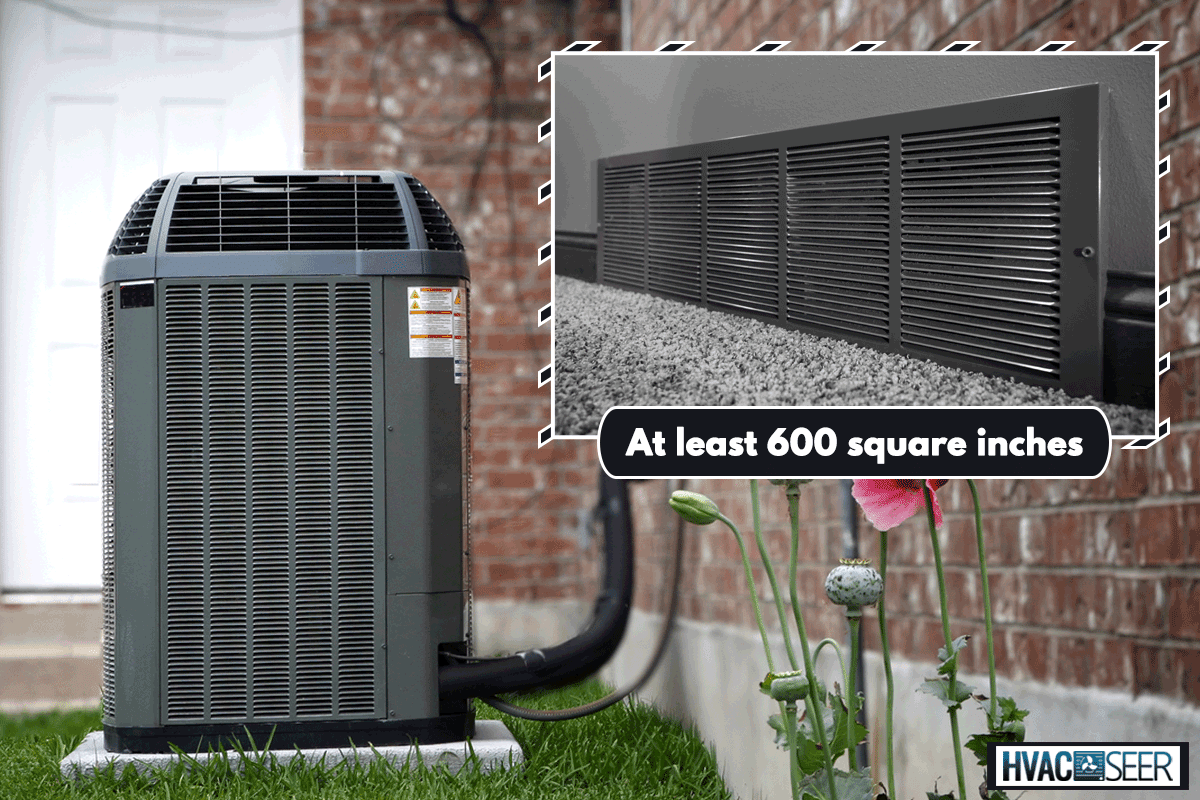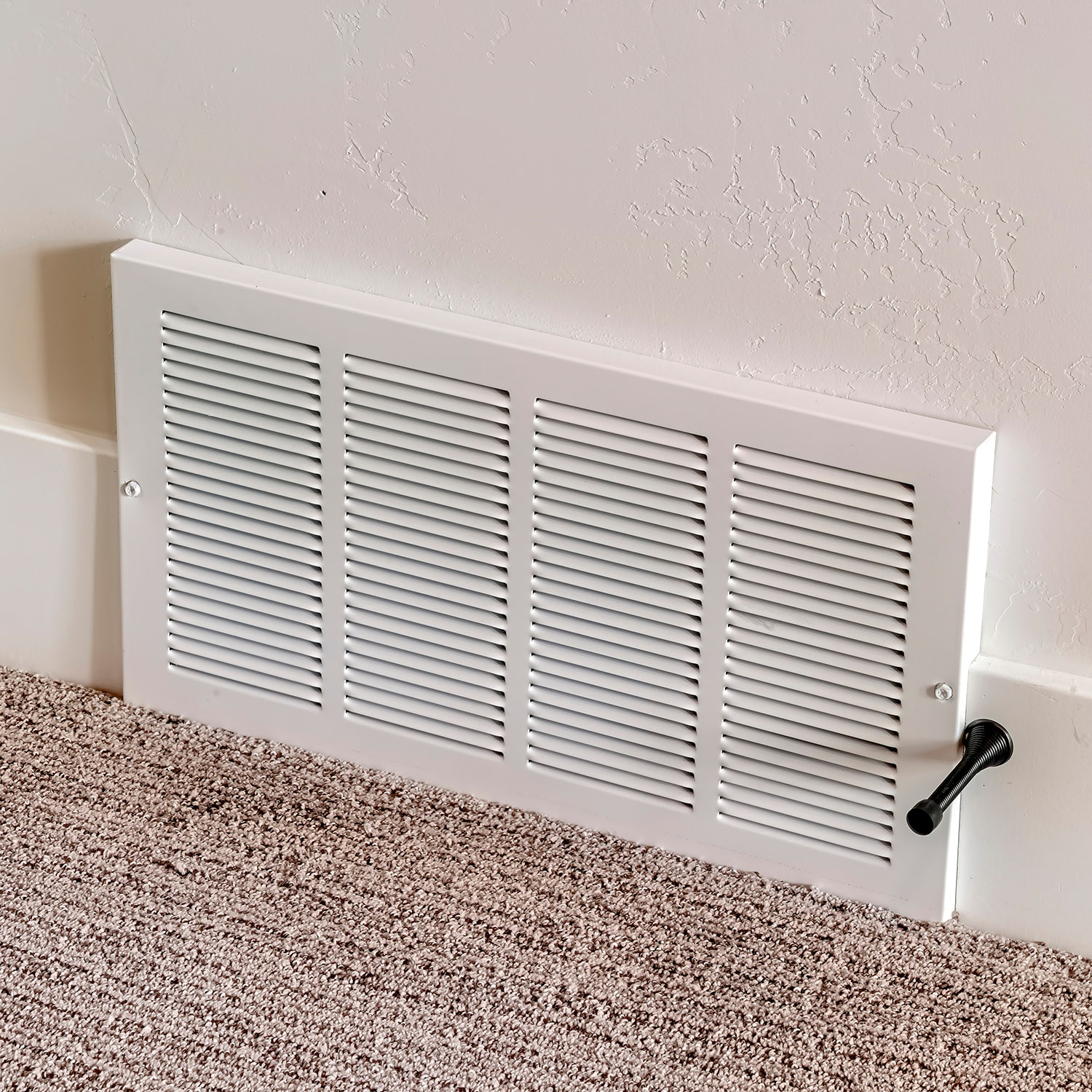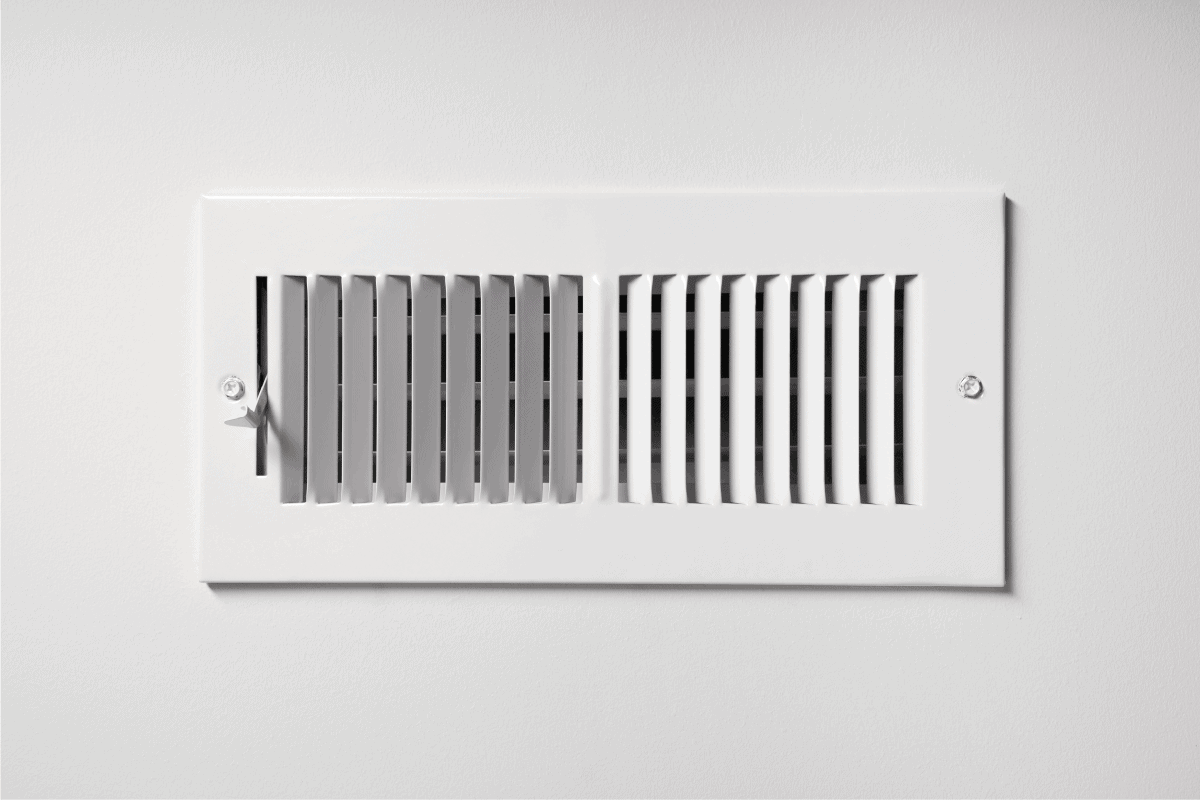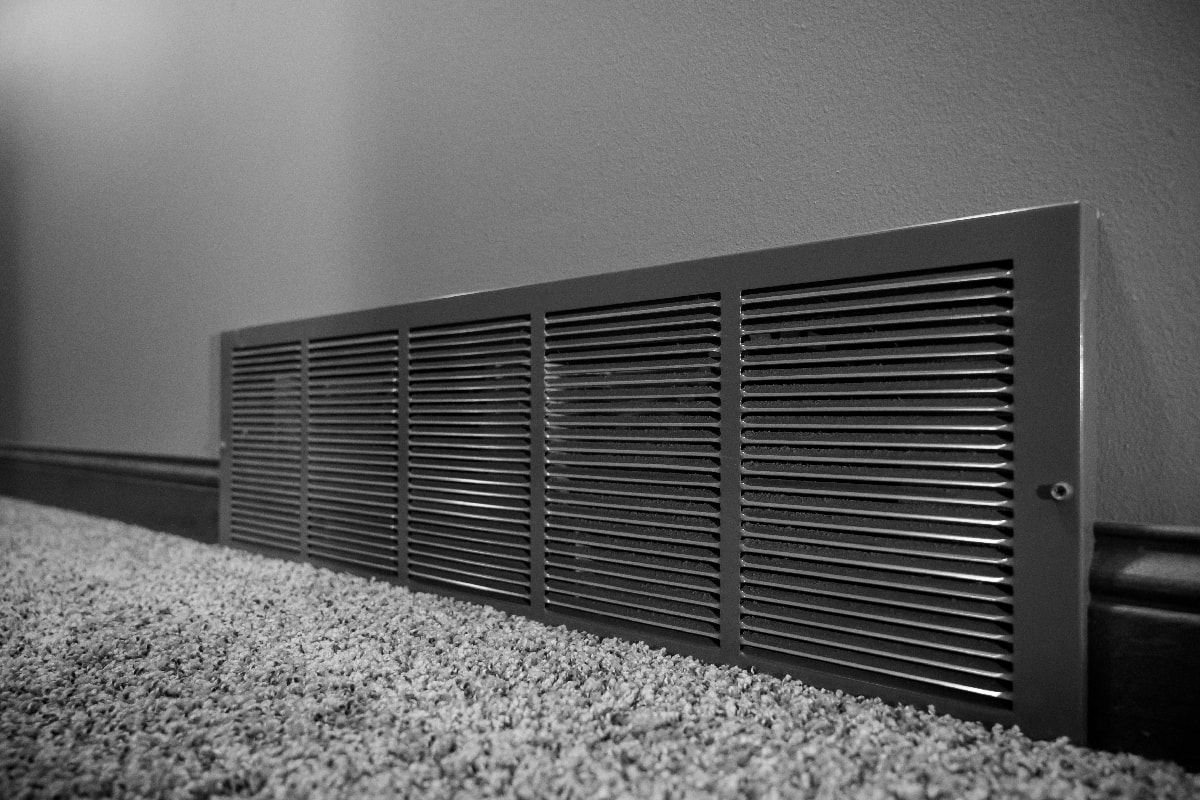Proper sizing is essential for your air conditioner's parts to operate correctly. These components include the return vent and return grille.
We researched what you need to know about the sizing of AC return grilles and shared the information in this post.
If you own a 3-ton AC unit, the best size is a return grille of at least 600 square inches. If you can't determine the accurate size, consider modifying the grille to fit perfectly or choosing the option closest in size.
A return air grille connects your AC's ductwork and significantly keeps air quality comfortable within your home.
Keep reading to learn how to calculate the appropriate grille size and other essential points.

What's The Best Return Grill Size for A 3-Ton AC?
The size of the return grille you should get depends on the type and the amount of airflow required for your cooling system.
Based on the standard requirements for a 3-ton AC, you should get a return grille size that provides a minimum of 600 square inches.
When manually measuring your return grille, take note of the general rule that you should have 200 square inches per ton.
So, if you have a 3-ton unit, you should calculate for a grille with 600 square inches.
Before picking out a grille, check your air conditioner's manual to get the specific airflow required by your unit. That way, you can look for a more accurate size.
The standard size for a residential air conditioner is usually 1.5 to 5 tons.
If you own a unit with a different size and airflow requirement, you should calculate its grille area before finding the right return grille size.

How To Size A Return Grille
There are two ways you can calculate a suitable return grille size. These are as follows.
Method 1: Using A Return Grille
If you're weighing your options, you can choose a size by calculating the size of your chosen grille in square inches. You can watch this video for a quick explanation.
Here is a rundown of the steps you need to follow:
- Consider the size of your air conditioner in the measurement ton.
- Multiply this by 200. It will be the number of square inches you need.
- Take your chosen return grille size and get the measurements of the inside dimension, meaning you should exclude the outer lip.
- Do this for both the height and the width.
- Once done, multiply the height by the width measurement. It will be the total number of square inches for the return grille.
- It will fit if it's exactly or a bit more than the square inches you need for your unit size. Note that it's okay to go over the amount you need, but it's best to avoid going under the required measurement.
Method 2: Using Your Vent
Measuring the vent is the simplest method of finding an accurate return grille size. This video shows how to take those measurements:
The following are the steps you should take to do it:
- Turn off your AC unit.
- If you have an existing grille, unscrew it to uncover the vent hole.
- Measure the width of the air vent hole. Take out 3/8 of an inch from the measurement to keep it from being too tight.
- Next, measure the height. Cut off 3/8 of an inch from your measurement.
- Choose a return grille with an inside dimension of the hole's measurements with the appropriate blade direction, depending on whether you choose a horizontal or vertical grille.
Tip: You should order your grille using the measurement width x height to prevent picking the wrong direction.
If you want to know how and where to install a ceiling return duct, read this post: How To Install a Return Air Duct In Your Ceiling
Can A Return Grille Be Too Big?

You will have to modify your return grille to the correct measurements if it's larger than what you need for your AC.
If you can't find an accurate measurement, professionals recommend choosing the size closest to your needs.
When shopping for a return grille, it's always better to get a slightly bigger size than one smaller.
A smaller grille will likely make more noise because of higher velocity. You might also have to use more than one.
A return grille with more free area is an excellent alternative to a smaller option.
Click here to see the HVAC Premium Store 36x14 Steel Return Air Filter Grille on Amazon.
Supply Grille Vs Return Grille Comparison
A grille refers to the protective cover placed on a supply or return vent, so it comes in two types: a supply grille or a return grille.
Supply grilles cover the vent where air travels from the HVAC system and gets pumped back into the room.
With these vents, you can feel the air coming out when you place your hand in front of it.
On the other hand, a return grille is a cover for vents that suck air into your unit for heating or cooling, then release it back to your home.
Unlike supply grilles, they can hold air filters and come in functional or decorative styles.
Check out the Saba Home Decor 20x20 Decorative Finish Air Vent Cover Grille on Amazon.
Should I Have A Return Air Vent?

Experts recommend installing return air vents around your home to enhance air circulation, quality, and efficiency. They suggest having at least one return vent in each room if you own a large house.
Your air conditioner absorbs air through the return duct to separate moisture and cools it, then releases it through the same vents. These are essential in transporting and spreading the cooled air throughout your home.
Here are some of the benefits of having a return air vent.
Maintain Air Pressure
Heating and cooling systems recirculate air to warm or cool it, then pump it back into your home. Since air enters the system, it should also have an exit. That's why you have a return air vent!
Return air vents will pull and pump air to and from the system. As a result, you can maintain optimal air pressure levels.
Reduce Humidity
The air conditioner separates the moisture from the air to keep the indoor climate comfortable, with additional filtering when it passes through return air ducts.
If you close off these vents or don't have them in some rooms, it lowers the possibility of better airflow and reduced humidity.
Too much moisture can lead to further complications, such as bacteria growth, health problems, and damage.
Improve Air Quality
Return air ducts significantly improve overall air quality by filtering debris.
The air taken in by your AC unit has to pass through the filter on your return vent, trapping dust and dirt.
At the same time, a return air duct increases airflow, allowing for better circulation balance and reducing the stress on your cooling system.
Save Energy And Money
Whether you have open vents or not, your HVAC system follows a constant input and output of air through the ducts, meaning it will continue consuming the same amount of power to run.
If you open your return air vents, keep multiple points wherein air can circulate without obstructing the airflow.
You can maximize the air input and output and optimize the cost to run the system, improving your AC's energy and cost efficiency.
Read this post if you encounter problems like strange sounds with your return vent: Noisy Air Return Vent? Here’s What to Do
How Many Return Air Vents Do I Need?

The amount of return air vents you need in your home depends on the size of the area, your HVAC system, and the ductwork.
Installing one return air vent in each room is enough to notice the benefits, but if you have ample space, you may need additional vents.
Professionals suggest identifying the needs of your home before deciding how many vents you will need. If your space gets too cold or warm quickly, it implies you lack return air vents in that location.
There's no harm in adding more return vents than necessary. Having several return air vents increases efficiency and keeps air pressure consistent.
In Closing
Your return air grille size depends on the size of your AC unit or the measurement of your return air duct. For a 3-ton AC unit, it's best to have a return grille totaling at least 600 square inches.
If you have an existing vent, you can take its measurements directly and choose your grille size.
Experts suggest avoiding a return grille with fewer square inches than your required total, so pick a size with more significant dimensions if you can't find one that fits perfectly.


